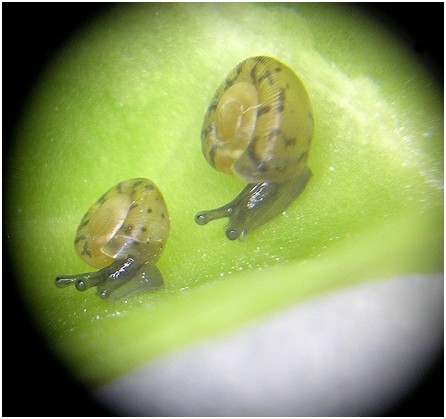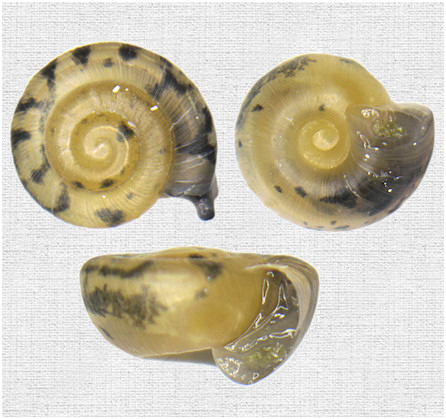|
Polygyra septemvolva Say, 1818 Florida Flatcoil Eggs And Hatchlings |
|
|
On 8/24/2018 this reporter collected four adult Polygyra septemvolva from the roadside swale along US-1 in northern St. Johns County, Florida. Some two months later a clutch of thirteen ova were discovered in a terrarium set up for the purpose of observation. The images below chronicle the hatching and subsequent growth of the Polygyra hatchlings. |
|
| November 3, 2018 - eggs initially discovered on 10/30/2018 | November 8 - eggs hatching |
|
Incubation period was roughly fourteen days. Whorl count at hatching was around 1.5. This was not uniform throughout the clutch as several individuals were slightly beyond the 1.5 whorl mark. |
The nuclear whorls are glossy and golden hued. The brilliant shine will diminish as the juveniles begin to add shell with characteristic striae which will eventually develop into coarse ribs. |
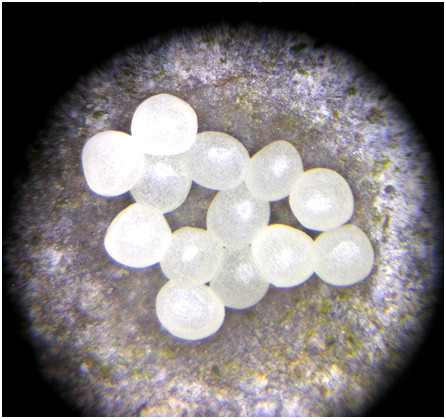 |
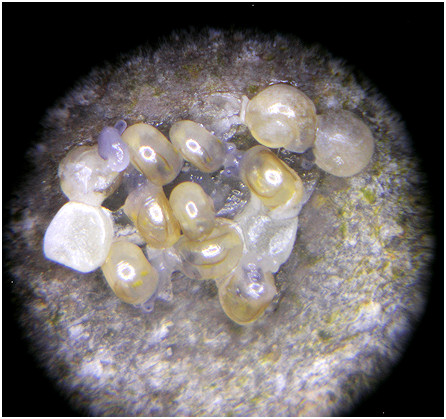 |
|
|
|
| November 9 - hatchlings | November 10 - hatchling |
|
After the first few days the snails became very active and began exploring their habitat. |
|
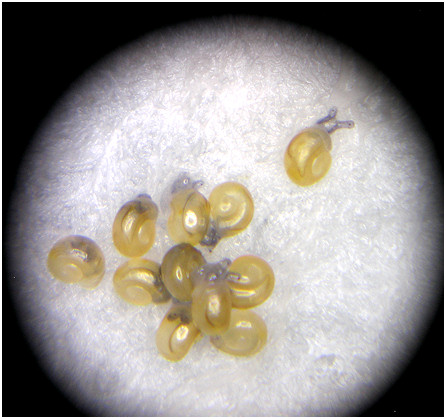 |
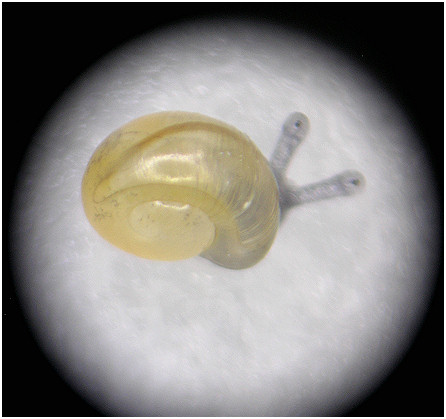 |
|
|
|
| November 11 - feeding on baby food | November 13 - dorsal view |
|
|
The animal pigmentation is beginning to darken. |
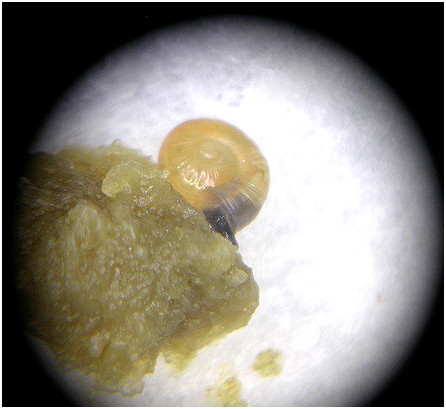 |
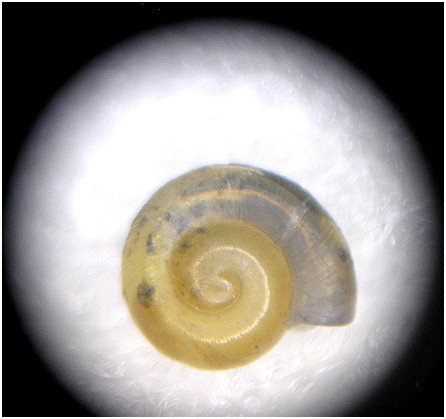 |
|
|
|
| November 16 - profile view (day 8) | November 18 - hatchlings (day 11) |
|
Calcium is vital to the snails health and shell development. The juveniles were fed broken hen's egg shells and cuttlefish bone. The juveniles at less than two weeks have extensively sated themselves. This is evidenced by the whitish material inside the shells. The axial striae, albeit very faint, is visible. The largest hatchling = 2.0 mm. / smallest hatchling = 1.5 mm. |
|
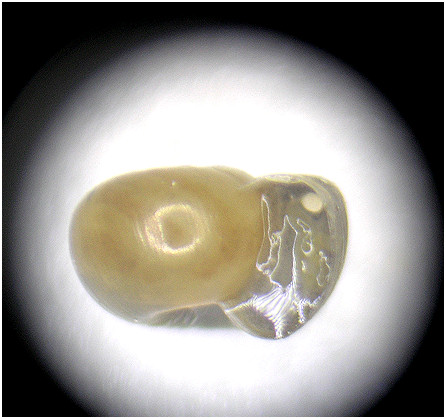 |
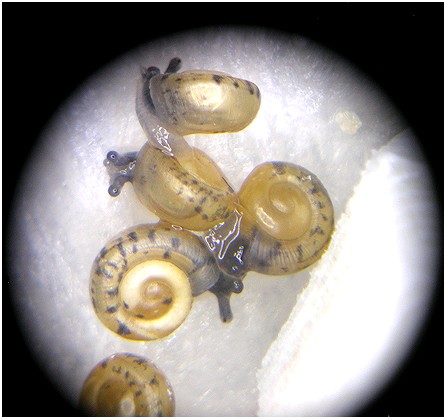 |
|
|
|
|
November 25 - Hatchlings (day 18) |
November 27 - Hatchling (day 20) |
|
Largest hatchling = 2.5 mm. / smallest hatchling = 1.8 mm. |
|
|
|
|
